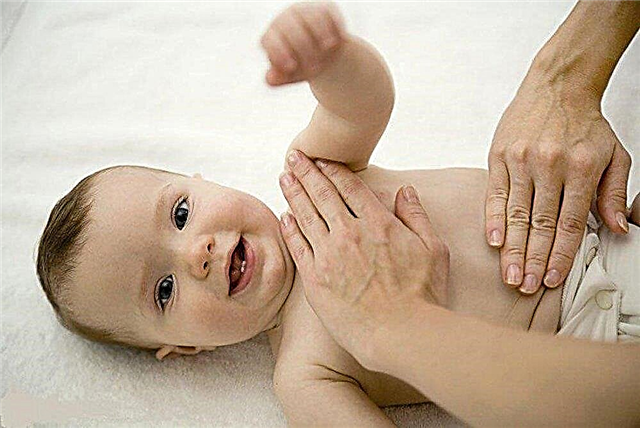The age at which the average child begins to walk on his own is about 1 year on average. BUT, this does not mean in any way that all children begin to take their first steps at exactly 12 months. The period from 9 months to 1.5 years is considered the norm. At 7-8 months, the baby tries to get up, at 9-11 months makes trial steps, holding onto the support or hand of an adult, and only then begins to walk independently.
Already behind the first smile to mom, the first sounds, the first skills of coups, we are already sitting on the ass, we already have the first tooth - it’s time to wait for the first independent, albeit uncertain step. Many moms are looking forward to this step! Remember (!) - there are no clear time indicators when your child will start walking independently and without support. As in everything that concerns the life of babies up to one year old, the time of independent movement is exclusively individual.

From how many months do children take their first steps
The age at which the average child begins to walk on his own is about 1 year on average. At 7-8 months, the baby tries to get up, at 9-11 months makes trial steps, holding on to the support or hand of an adult, and only then begins to walk on his own.

Factors affecting the time the child will go:
- The genetics of the child. If one of the parents went late, then you should not wait for early steps from the baby;
- The constitution and gender of the baby. Fat children will go a little later than slender peers, and girls begin to walk earlier than boys;
- Temperament. Calm kids are in no hurry to walk. It is convenient for them to explore the world slowly and they feel great sitting or crawling. Fidgets, on the contrary, tend to learn more new things faster and take their first steps very early.
When your baby begins to walk on its own, you will notice that his walking is noticeably different from that of an adult in several ways:
- The child places the feet parallel to each other;
- Children walk as if “typing step”, not being able to roll their feet from heel to toe;
- Children still do not know how to keep the center of gravity and therefore often fall.
Given these features, parents need to carefully look after their child and be alert. It is especially dangerous when a child falls flat forward or backward - he does not know how to cushion the fall with his hands and can break his face or the back of the head. However, do not panic and are afraid of falling to madness. The bones of children at this age are very elastic and the risk of fractures is minimal.
The reaction of the parents when the child frequently falls is very important. You should not rush to the child with horror on your face every time and pick him up. You just need to cheer up the beginner “walker” in a gentle and calm voice and wait until he gets up and continues his steps.
As soon as the child becomes more mobile, all dangerous objects in the house must be removed, sharp corners must be secured with special overlays, the parent must be constantly on the alert, not letting the child out of their control zone.
Very important article: we read how to secure a home for a child
Which is better: sooner or later
- You shouldn't be very happy if your child started to walk very early. The muscles of the back and legs are not yet fully strengthened, and the load exerted when walking is still quite serious for them. Large, well-fed babies may have problems with the formation of the musculoskeletal system of the legs. Especially if the child did not stand on his own legs, and his parents forced this event. The baby's lower leg does not support his weight, which leads to their curvature and improper placement of the feet. Nature is laid down and subconsciously kids know when to take their first step;
- The child starts to walk late for several reasons. Perhaps his leg and back muscles are not yet ready for upright posture. It is possible that the immune system is weakened by an illness or birth injury.
Helping your child: exercise and massage
Can a baby be encouraged to take the first step faster if the appearance of this skill is late? - The most important thing is to adhere to a sense of proportion in the desire to quickly teach your baby to walk. There are several ways to help your child learn a new skill:
- It is necessary to provide the child with the necessary sufficient space for movement. Babies who are constantly in the arena will go later than those who do not use the arena. You need to arrange various stable pieces of furniture around the room for support. The baby's favorite toys must be placed so that they can be reached, the child had to break away from the support. Over time, the distance from support to support gradually increases.
- Massage. Massage consists in strengthening and relaxing the muscles that work when walking. Stroking, rubbing and tapping on the feet and legs of the child will bring a good positive effect (read about massage here).
- Daily gymnastics and stimulating exercises. The set of exercises should include flexion and extension of the legs, squats and stretching with the help of an adult, bouncing on the knees of the mother, exercises on fitball (link to helpful articles massage and exercise above).
- Stable rolling toys will help your little one feel more confident. The child pushes the toy in front of him and moves almost independently.

Updated
- Don't rush your child. All average indicators are a conditional guideline. Therefore, even at 14-15 months, it is still quite normal for some not to walk on their own. The main task of parents at the initial stage is to wait until the child is ripe for mastering a new skill. Haste can negatively affect the formation of feet, muscles, joints.
- Create a supportive, safe environment: remove anything that could be harmful, eliminate sharp corners, hide cords, and be especially sensitive to the baby.
- Conduct physical training. No special exercise is required. You just need to train all muscle groups from birth in a timely manner, step by step. Spread on stomach, stimulate rolling. Next, the child must sit down by himself from a prone position. And, of course, crawling plays a big role. The task of the parent is to encourage the child's physical activity in every possible way. For example, attracting him with toys, forcing him to crawl around the room. And jumping on their parents' knees, which children love so much, is an excellent exercise to strengthen the legs. (How to Make Your Newborn Baby Stronger: 4 Basic Exercises to Develop Your Baby's Strength and Endurance)
- Massage develops muscles well and relieves tension in them at the same time. You can contact a specialist, or you can do it yourself.
- Encourage walking. You can show an amusing toy, and then put it on the table, for example, so that you could get it only by getting on your feet. When the baby tries to take the first steps, the toy can miraculously move from the table to the sofa as soon as the baby approaches it. It's good to be outside more often. where it will be possible to observe other children who already know how to walk. In this case, it is better to leave the stroller at home. It is convenient to use special “reins”. But only when the child is already starting to walk. It is important to ensure that the child's body does not bend forward or to the side.
- Encourage. Praise for success, the smile of mom and dad is the best reward. Do not forget about the gentle and enthusiastic words. The child deserves it for his first steps.
Things to Remember When Teaching Your Child to Walk
- Better to start walking barefoot. This leads to the correct formation of the foot. And along the way, he hardens the baby. Well, or wear socks with rubberized soles;
- For walking on the street, you should purchase high-quality and comfortable shoes with a tight back and make sure that she does not rub her legs;
- Don't be tempted by a walker. Children often walk on their toes after a walker. And they refuse to master walking skills in a timely manner;
- During training, you do not need to hold the child by the armpits. More correctly for the hand, forearm or even for the hood;
- And, most importantly, be patient. You shouldn't fit your child into standard frames. But you need to be an assistant to him in everything, as soon as he himself is ready for new discoveries.
We read in detail a very useful article: How to teach a child to walk: 10 correct tips
You shouldn't use walkers and jumpers. They not only do not stimulate independent movement, but, on the contrary, contribute to delays in walking.
First footwear for a toddler
From the point of view of orthopedics, baby shoes must meet the following requirements:
- shoes should be chosen from genuine leather and suede so that the baby's leg breathes;
- the sole of the first shoe is thin and flexible, otherwise the baby will stumble;
- the back of the shoes for the child must be chosen firm so that the shoes or sandals do not fall off when walking from their feet;
- a small and stable heel will save the child from falling back;
- the top and side of the shoe should be soft and easy to wrinkle;
- to form the arch of the foot in shoes, it is worth choosing a flexible instep support.
Walking on tiptoe or toe
It happens that, instead of walking normally, the child begins to walk on tiptoes. If the baby just wants to attract the attention of loved ones or tries a new way of movement for himself, then everything is fine.

When the baby constantly moves on tiptoe in a beautiful ballet gait, without even trying to get down on his entire foot, then it is necessary to take action. Don't try to fix the situation yourself. In such an important matter, it is better to trust a doctor who will advise what to do. Most often, a special massage, special gymnastics and physiotherapy are prescribed.
We read in detail: Why does a child tiptoe: what to do
Dr. Krasnova: What to do if a child walks on tiptoes
You need to sound the alarm if the baby has not started walking after a year and a half... And even then, only in the case of low activity of the child and an unsatisfactory general condition of the baby. When a child is cheerful, active, perky crawls with a good mood, but does not walk - do not worry, he will go, everything has its time.
On the topic of development:
- Development up to a year by months (from birth to a year);
- When the baby starts to crawl;
- When the child starts to sit.



